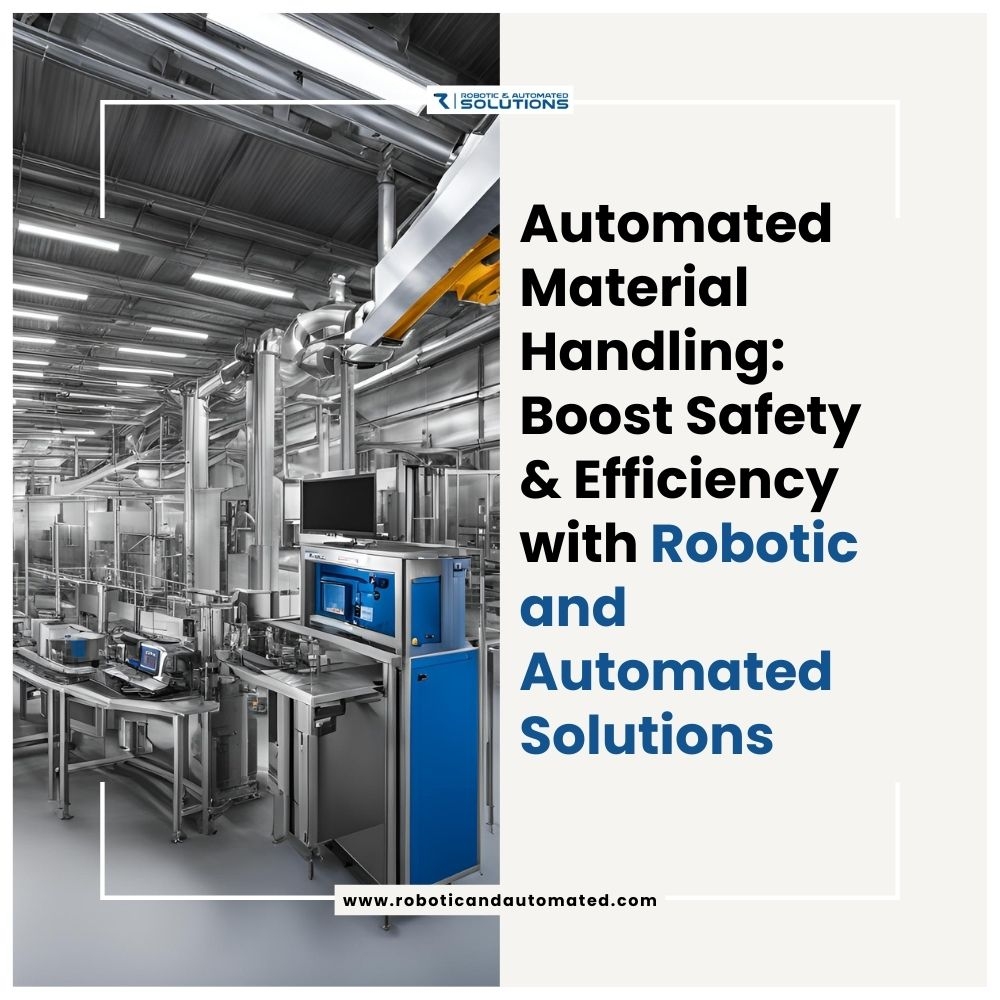Manual material handling has traditionally been a cornerstone of industrial manufacturing. However, this approach often entails repetitive tasks, considerable time and labor investments, and potential safety hazards. The advent of automated material handling systems represents a significant evolution in addressing these challenges. The following outlines how automated material handling is increasingly revolutionizing manufacturing environments.
Enhanced Safety
The adoption of automated material handling systems brings substantial improvements in workplace safety. Manual handling of heavy or hazardous materials poses significant risks, including musculoskeletal injuries and accidents. Automated solutions, such as robotic arms and automated guided vehicles (AGVs), greatly minimize human contact with potentially dangerous materials, thereby reducing the risk of workplace injuries. These systems are specifically designed to undertake tasks that are either too risky or physically demanding for human workers, creating a safer work environment.
Increased Efficiency
Efficiency in material movement within manufacturing facilities is markedly enhanced through automation. Unlike manual processes, automated systems operate continuously without experiencing fatigue, leading to significant increases in productivity. Automated conveyors, sorters, and retrieval systems ensure the swift and precise transportation of materials between locations, reducing downtime and accelerating production cycles.
Consistent Quality
Manual handling can adversely affect product quality due to human error, which may result from fatigue, distraction, or inconsistent techniques. Automated systems, in contrast, provide consistent performance and accuracy, ensuring uniform handling of materials with each operation. This consistency not only improves product quality but also minimizes the likelihood of defects and the need for costly and time-consuming rework.
Labor Cost Reduction
Although the initial investment in automated material handling systems can be substantial, the long-term financial benefits are significant. Automation reduces reliance on manual labor, allowing companies to reallocate their workforce to more strategic and value-added tasks. This shift not only lowers labor costs but also addresses the growing shortage of skilled labor in the manufacturing sector.
Space Optimization
Automated material handling systems are designed to optimize space utilization effectively. For instance, automated storage and retrieval systems (AS/RS) enable manufacturers to maximize storage capacity without the need for facility expansions. High-density storage solutions facilitate the storage of greater quantities of materials in reduced space, leading to improved organization and decreased clutter on the production floor.
Improved Inventory Management
Effective inventory management is essential for seamless operations. Automated material handling systems integrate seamlessly with warehouse management software (WMS), offering real-time data on inventory levels, locations, and movements. This integration enables manufacturers to maintain accurate inventory records, prevent stockouts and overstock situations, and streamline supply chain operations. Enhanced visibility into inventory also supports better demand forecasting and planning.
Faster Throughput
Automation systems are designed to expedite material movement throughout the production process. Automated conveyors, sortation systems, and robotic pickers significantly increase the speed at which materials are processed and transported. This enhanced throughput allows manufacturers to meet tight production schedules and respond more effectively to customer demands.
Scalability and Flexibility
As market demands shift, manufacturers require the capability to adjust operations rapidly. Automated material handling systems offer the flexibility to scale operations up or down without major changes to infrastructure. Modular designs and programmable controls enable companies to reconfigure systems to meet new requirements, providing a scalable solution that evolves with business needs.
Enhanced Data Collection and Analytics
Automation facilitates extensive data collection related to operational performance. Sensors, RFID tags, and barcode scanners monitor material movements, equipment status, and process efficiency. Analyzing this data helps identify bottlenecks, optimize workflows, and make informed decisions that drive continuous improvement. Enhanced data collection and analytics enable manufacturers to maintain a competitive edge in a data-driven market.
Sustainability and Energy Efficiency
Automated material handling systems contribute to sustainability by reducing energy consumption and waste. Advanced control systems ensure equipment operates only when necessary and at peak efficiency. Additionally, automation reduces material waste through precise handling and improved inventory management. Sustainable practices not only benefit the environment but also enhance a company’s reputation and can lead to cost savings through more efficient resource utilization.
Superior Accuracy
Automated material handling systems offer superior accuracy in material handling, minimizing errors. These systems maintain consistent operations, reducing variability and enhancing overall product quality. Integration with sensors and artificial intelligence allows for real-time adjustments and corrections, improving handling precision. Reduced human error ensures accurate identification, sorting, and processing of materials, bolstering quality control and customer satisfaction.
Conclusion
The integration of automated material handling systems is reshaping the industrial manufacturing landscape. By improving safety, increasing efficiency, and reducing labor costs, these systems provide a comprehensive solution to many modern manufacturing challenges. Their ability to optimize space, enhance inventory management, and offer scalability and flexibility makes automation a compelling investment for facilities aiming to stay competitive in a dynamic market.
Furthermore, advanced data collection and analytics, along with a focus on sustainability, position manufacturers to meet future demands and regulatory requirements. As the manufacturing industry continues to evolve, the transition towards automated systems will play a crucial role in driving operational excellence and achieving long-term success.
For additional insights into robotic and automated solutions, please visit the About page on our website.



